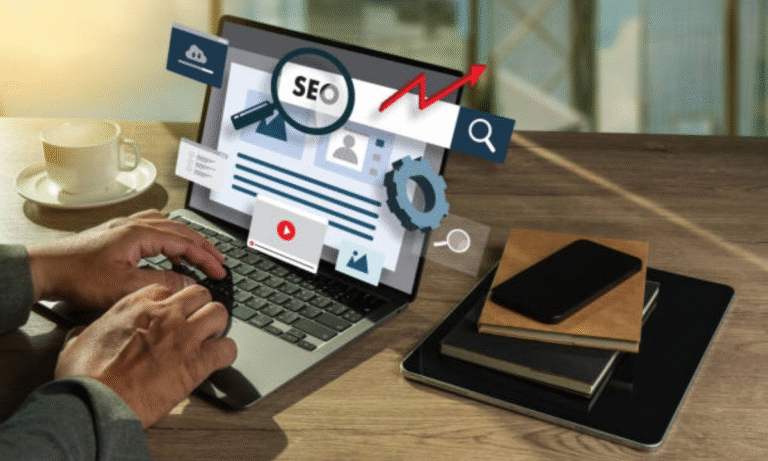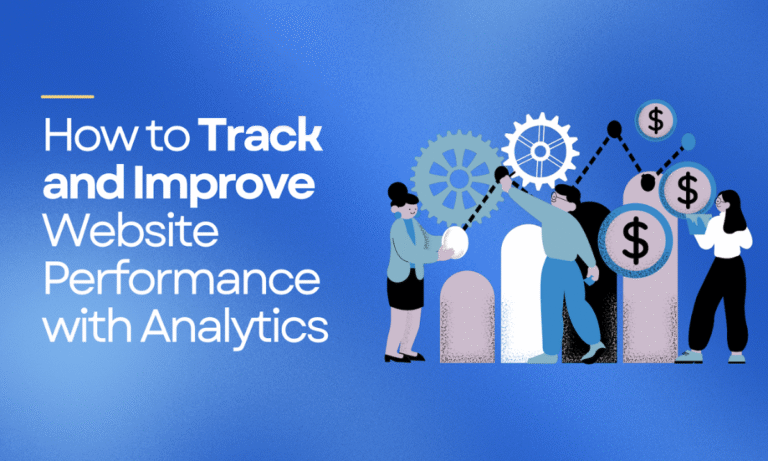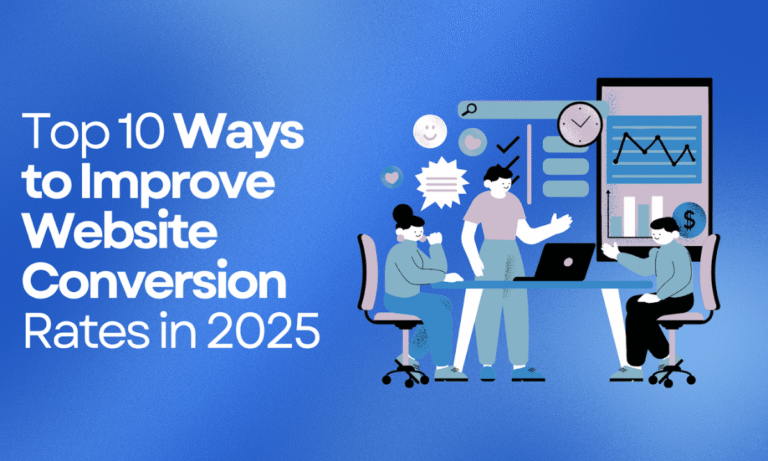Digital Marketing isn’t just an option—it’s the transformative force behind business growth. With consumers spending more time online than ever, brands must leverage cutting-edge strategies to capture attention, drive engagement, and convert leads. The journey of digital marketing dates back to the 1990s. The term “digital marketing” emerged in the 1990s, initially with email campaigns and basic web ads, and has since evolved into a data-driven, AI-powered ecosystem where personalization and automation reign supreme.
For businesses, it’s not just about running ads or posting on social media. It’s about understanding and mastering the Features of Digital Marketing, its role in branding, and how to choose the right Digital Marketing Agency in Bangalore (or any tech-savvy hub). This knowledge can be the difference between success and failure, whether you’re a startup or an enterprise.
This guide delves deep into the strategies, tools, and trends shaping digital marketing in 2025, equipping you with actionable insights not only to keep up but also to stay ahead. Let’s begin this journey of staying at the forefront of digital marketing.
The Evolution of Digital Marketing
The story of digital marketing begins modestly. The term “digital marketing” was first used in the early 1990s, when the internet transitioned from an academic tool to a commercial playground. The first clickable banner ad (1994), the rise of search engines like Google in the late 1990s, and the emergence of social media in the 2000s set the stage. Fast-forward to 2025, and we’re in an era where machine learning predicts customer behavior, augmented reality (AR) enhances shopping experiences, and privacy-first strategies dominate.
Key Phases in Digital Marketing’s Evolution:
- 1990s–2000s: Email marketing, basic SEO, and pay-per-click (PPC) ads laid the groundwork.
- 2010s: Social media exploded, content marketing became king, and data analytics shifted from vanity metrics to actionable insights.
- 2020s: AI and automation took center stage—chatbots, dynamic ad targeting, and predictive analytics now drive hyper-personalized campaigns. Privacy regulations, such as GDPR and CCPA, have forced marketers to innovate beyond third-party cookies.

Source: https://www.researchgate.net/figure/The-evolution-of-digital-marketing_fig1_352007335
Today, digital marketing isn’t just about reaching audiences—it’s about engaging them intelligently. For instance, generative AI can craft personalized email copy in seconds, while blockchain ensures transparent tracking of ad spend. The brands that thrive are those that adapt to these shifts without losing sight of their core principles: relevance, value, and trust.
Core Features of Digital Marketing in 2025
The Features of Digital Marketing in 2025 aren’t just upgrades—they’re revolutionary shifts reshaping how brands connect with audiences. Forget spray-and-pray tactics; today’s landscape demands surgical precision, powered by AI, real-time data, and immersive experiences. Here’s what sets modern campaigns apart:
1. Hyper-Personalization at Scale
AI-driven content customization tools, such as ChatGPT and Gemini, dynamically adjust messaging based on user behavior, location, and past interactions.
Predictive customer journeys with machine learning anticipate needs before users search—think Spotify’s “Discover Weekly,” but for e-commerce product recommendations.
2. Omnichannel Integration (Seamless, Not Siloed)
Unified cross-platform tracking: With the death of third-party cookies, solutions like Google’s Privacy Sandbox and first-party data pools keep attribution accurate.
Phygital experiences: QR codes in physical stores trigger AR try-ons, while social commerce platforms like Instagram Shops and TikTok Live sales blur the lines between online and offline.
3. Voice & Visual Search Dominance
By 2025, 50% of searches will be voice-based (Comscore). Brands optimize for conversational queries (“best vegan leather laptop bag under ₹15,000”) and image searches, such as those powered by Pinterest Lens and Google Lens.
4. Privacy-First Marketing
Zero-party data, which refers to data that users willingly share with a brand, is becoming a valuable resource. This can be collected through quizzes, polls, or interactive content, such as a skincare quiz that provides a tailored routine based on the user’s preferences.
Blockchain for transparency: Smart contracts verify ad placements and influencer partnerships, helping to reduce fraud.
5. Sustainability as a Selling Point
Green SEO: Sites earn rankings by highlighting eco-friendly practices, such as low-carbon hosting and sustainable packaging.
Cause-driven campaigns: Patagonia’s “Don’t Buy This Jacket’ ethos now extends to digital brands like Native, which has a “Plant a Tree Per Lead’ initiative.
A 2024 HubSpot report found that campaigns using three or more digital marketing features (e.g., AI personalization, omnichannel, and voice search) saw 2.3 times higher conversion rates. The takeaway? Piecemeal strategies won’t cut it.
Digital Marketing and Branding
A brand’s digital footprint now dictates its perceived value, credibility, and emotional resonance. Consider this: 89% of consumers stay loyal to brands that share their values (Edelman Trust Report, 2024). Here’s how forward-thinking companies fuse both disciplines for maximum impact.
1. Consistency Meets Hyper-Relevance
- Unified storytelling across touchpoints: Whether a TikTok ad, email nurture sequence, or chatbot interaction, tone and visuals remain cohesive but adapt contextually.
- Example: Oura Ring’s health data-driven emails mirror their app’s minimalist UX, reinforcing brand trust.
2. Data-Branding Feedback Loops
- Real-time sentiment analysis: Tools like Brandwatch scan social conversations to adjust messaging (e.g., avoiding slang that falls short).
- AI-generated brand avatars: Custom GPTs trained on brand guidelines ensure that every piece of content, from tweets to whitepapers, stays on brand.
3. Experiential Branding Through Digital Channels
- Virtual pop-ups: Gucci’s Roblox store or Nike’s. SWOOSH NFTs create exclusivity without physical limits.
- Interactive brand assets: IKEA’s AR catalog allows users to “place” furniture in their homes, blending utility with a brand experience.
4. Employee & Micro-Influencers as Brand Amplifiers
- LinkedIn employee advocacy programs: Staff share thought leadership, humanizing B2B brands (e.g., a digital marketing agency in Bangalore’s team-led webinars).
- Nano-influencer collabs: 10K-follower creators drive 3x higher engagement than celebrities (Later.com).
5. Branding Beyond Profit
- Digital CSR initiatives: Patagonia’s “Action Works” platform connects users to local environmental activism—a brand purpose baked into its digital core.
- Transparency dashboards: Allbirds’ “Carbon Footprint” tracker proves sustainability claims with real-time data.
A 2025 Moz study found that inconsistent branding across digital channels increases customer acquisition costs by 37%. Meanwhile, brands that master this synergy (like Glossier or Liquid Death) enjoy cult-like followings with lower ad spending.
Choosing the Right Digital Marketing Agency in Bangalore (or Any Tech Hub)
The wrong digital marketing agency can drain budgets with vanity metrics; the right one becomes a growth partner. In Bangalore—a city home to 5,000+ agencies—how do you cut through the noise? Here’s your 2025 evaluation framework:
1. Look for Vertical-Specific Expertise
- B2B vs. B2C specialization: A SaaS-focused agency (like a digital marketing agency in Bangalore’s SaaSion) will prioritize LinkedIn ABM over TikTok trends.
- Niche tech stacks: Demand case studies using CDPs (Customer Data Platforms) like Segment or AI tools like Jasper for your industry.
2. Transparency as a Non-Negotiable
- Blockchain-tracked reporting: Some agencies now use platforms like MetaTrust to verify ad spend and performance in real time.
- Anti-BS clauses: Contracts should guarantee no “black hat” SEO or inflated follower counts.
3. Adaptability to 2025’s Shifts
- Cookie-less targeting proof: Ask how they’re leveraging contextual targeting, FLoCs (Federated Learning of Cohorts), or first-party data lakes.
- AI integration: Do they build custom LLMs for content? Use AI bidding in Google Ads?
4. Bangalore-Specific Advantages
- Local partner ecosystem: Top agencies collaborate with Karnataka’s startup incubators, such as NSRCEL, for early access to tools.
- Multilingual campaigns: Agencies like Wittypen, a digital marketing agency in Bangalore, craft content in Kannada, Hindi, and English for hyper-local reach.
5. ROI-First Pricing Models
- Avoid retainers without KPIs: Performance-based pricing (e.g., 15% of incremental revenue) aligns incentives.
- Pilot projects: Test with a 3-month SEO or paid media sprint before long-term commitments.
Conclusion
From AI-driven personalization to privacy-compliant strategies, the brands that succeed will be those that adapt quickly while staying true to their core identity. Whether you’re optimizing for voice search, refining your branding, or partnering with the right Digital Marketing Agency in Bangalore, the key is to stay agile, data-informed, and customer-centric.
| Aspect | Key Insight for 2025 |
| AI & Personalization | Use AI to tailor content, but keep your brand’s human touch intact. |
| Omnichannel Strategy | Seamlessly integrate experiences across platforms—social, email, search, and beyond. |
| Privacy-First Marketing | Shift to zero-party data and contextual targeting as cookies phase out. |
| Branding & Digital Synergy | Ensure every digital interaction reinforces your brand’s voice and values. |
| Choosing an Agency | Look for transparency, vertical expertise, and ROI-driven pricing models. |
Web Converts and the team are more than just a digital marketing and web development company—we’re your growth partners. Whether you’re building a brand from scratch or scaling an established business, we’re here to help you navigate 2025’s digital landscape with confidence. Let’s create something remarkable—together.





